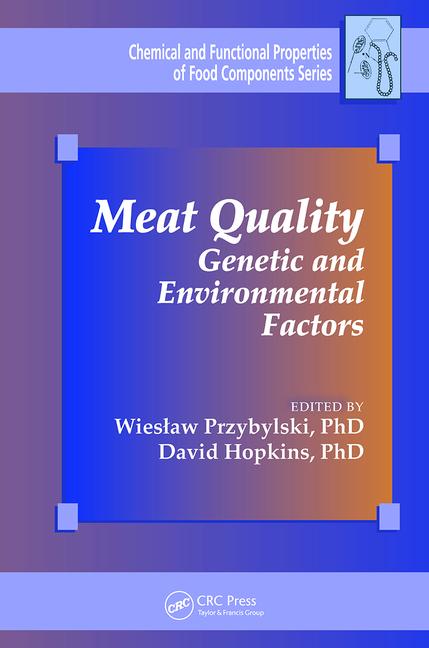In adding everything from caramelized onions to smoked Gouda cheese to their products, gourmet burger, sausage and meatball formulators are getting creative through the inclusion of ingredients that add value in terms of eye appeal, flavor and often a touch of nutrition. I am not talking veggie burgers, rather the incorporation of fruits, vegetables and cheeses into red meat and poultry. This is not a new idea, but the ingredient selection and execution has definitely evolved from the pickle and pimento loaf that reached its peak in popularity during the first Great Depression.
One of the original players is Aidells Sausage Co., a 25-year-old gourmet sausage company that was recently acquired by Sara Lee Corp. The company is known for chicken sausage flavors such as Spinach & Feta, Artichoke & Garlic, and Sun-Dried Tomato with Mozzarella Cheese, with all of them containing detectable bits and pieces of the characterizing flavors.
Aidells also makes Teriyaki Pineapple Meatballs with real pineapple chunks. And Sabatino’s has a 180-calorie fully cooked Chicken, Spinach & White Cheddar Burger that is to die for.
Kayem Foods Inc. created a chorizo sausage that puts the bodega butcher to shame. New al fresco Chipotle Chorizo with Mango is made from skinless chicken meat blended with chipotle peppers and diced mango in a smoky adobo sauce. The chorizo joins other chicken sausage favorites such as Sweet Apple, Roasted Pepper & Asiago, and Sweet Italian. According to the company, the fully cooked sausages contain no artificial ingredients, have 70% less fat than traditional pork sausage and are gluten free.
Not all such products are fully cooked. For example, Koch’s Turkey Farm LLC developed All-Natural Cranberry Turkey Burgers, which consist of turkey and diced dry cranberries. Sold frozen, these burgers require proper cooking.
Because many of these products are based on poultry, this gives them a healthful edge to red meat products. The value-added flavorful ingredients also often contribute to an improved nutrition profile by reducing fat and calorie content. In particular, fruits and vegetables can displace fat, as well as reduce the need for added sugars and acidulants, which are often added to such comminuted foods for moistness and to round out the salt and protein flavors.
The difference between these packaged products and the fresh items sold at the butcher counter, such as ready-to-bake meatloaves stuffed with veggie and cheese combinations, or flattened steaks or chicken breasts rolled with a colorful garden of chopped produce, is that the fruits, vegetables and cheeses are selected specifically for this application. It’s not as easy as walking to the produce department and chopping up some fresh spinach leaves.
Suppliers offer fruits and vegetables that have been blanched, to retain color and integrity, as well as products that are individually quick-frozen in a manner to control free moisture. The latter eliminates excess water, which improves integrity in fresh, frozen and refrigerated applications.
Such products can also be treated to various culinary cooking techniques prior to freezing. This includes caramelizing, fire-roasting and grilling. Such cooking steps add flavor as well as color, as the sugars in the fruit and vegetable pieces can participate in the Maillard reaction, with the end result being charring or browning, as well as authentic grill marks. These cooking techniques, coupled with the addition of flavorful herbs and spices, often contribute flavor profiles that allow formulators to reduce added salt, which can positively improve the information on the nutrition panel.
Cheese also complements many of these gourmet meat products. And similar to how fresh produce is not the best choice for a prepared and packaged product, nor is cheese right from the case.
When functionality such as moisture content and melt needs to be controlled, as in the application of cheese to multi-component meat products, process cheese is often your best choice. The term “process cheese” represents a range of products with specific standards and allowable ingredients. Simply, process cheeses start out by blending a minimum amount of specified natural cheese with other ingredients including those with emulsifying properties, followed by a high-heat treatment. There are a variety of other ingredients and processes that can be included, depending on desired end product, which is usually a smooth cheese with varying levels of melt and firmness. Almost any natural cheese can be made into a comparable process version.
There are, however, some lower-moisture natural cheeses that have been successfully added to meat products. For example, Gorgonzola, which is a type of blue cheese, has a sharp, salty flavor profile. Its smell is pungent, its texture crumbly and a little goes a long way. Most cheeses in the blue family take a longer time to melt than other natural cheeses, and the melt is slightly grainy, making them a natural complement to many value-added prepared proteins. The same is true for hard cheeses, such as Asiago, Parmesan and Romano, which are extremely low in moisture (less than 3%) and do not readily melt and run out of the protein when it is cooked. Feta and some Mozzarella cheeses also tend to be slower melt cheeses that do not run.
Because an infinite number of ingredient combinations exist to add eye appeal, flavor and nutrition to your gourmet protein, this category of prepared meat products is likely to continue to boom in the next few years. Maybe I should get into the meatball business.




Report Abusive Comment